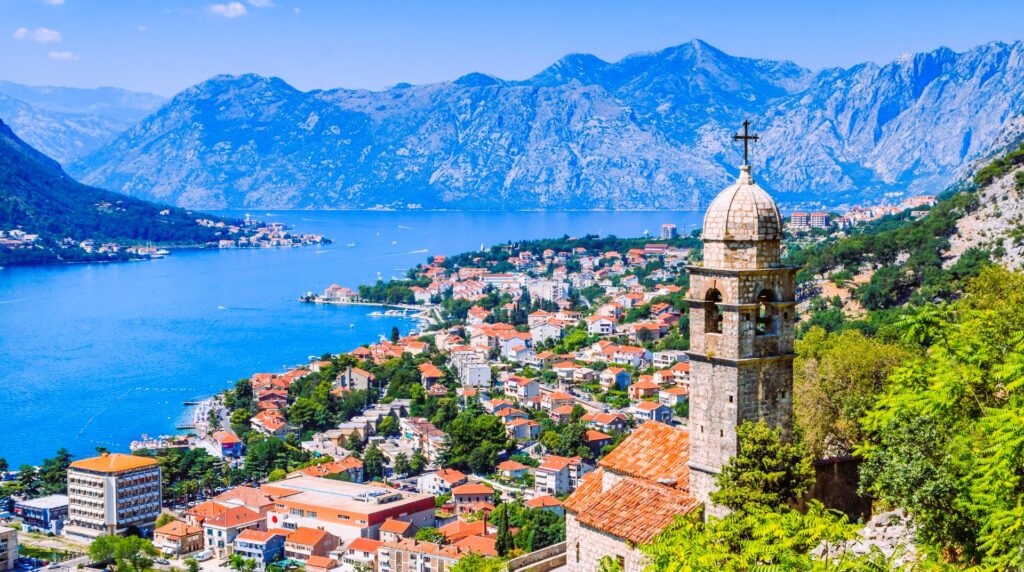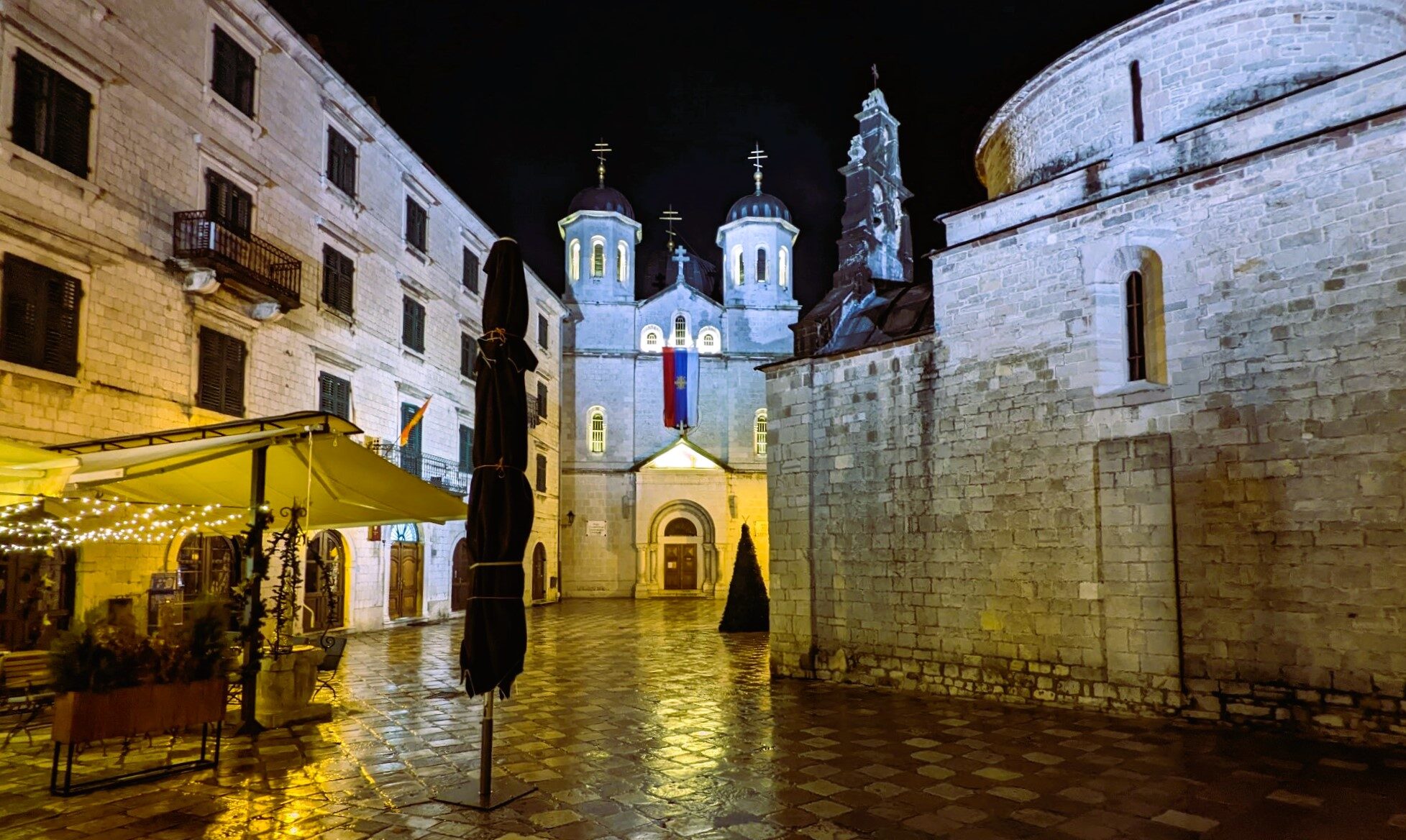
Kotor
Our first stop in Montenegro was the beautiful city of Kotor. Strategically placed at the back of the bay, the fortified town, surrounded by limestone mountains and the cliffs of Mt. Lovćen, is also close to Montenegro’s Adriatic coast. With a fortress spanning the old town and the adjacent hill, Kotor has been an area occupied by numerous empires over the years, capitalizing on its location and infrastructure.
Now a UNESCO Heritage site, the town is bustling with chic restaurants, festive bars, and multiple live music venues, including a very unique jazz club.



Old Town Kotor
The old town of Kotor boasts a history spanning millennia, though the majority of the city visible today was constructed during Venetian rule from 1420 to 1797. The old city, a labyrinth of narrow stone streets and Venetian-styled buildings, is encircled by formidable fortifications that remain remarkably well-preserved.
Steeped in character and historical significance, staying within these walls instantly transports you back in time. We stayed in a building dating back over four centuries, exquisitely renovated to accentuate its period details.
There’s nothing quite like wandering the winding, dimly lit streets at night. Suddenly, you might stumble upon a grand square dominated by an impressive medieval tower, or encounter a Romanesque church like St. Tryphon’s Cathedral, gazing down upon you while Saint John’s Castle keeps watch from above.
Our visit to Kotor coincided with autumn, so evenings grew chilly, occasionally punctuated by rain, which only added to the allure of navigating the wet, cobbled streets in the dark.
However, a different world awaits beyond the city walls. Exit the gates of Kotor, and you’re greeted by a picturesque marina and bay, a frequent haunt for cruise ships and some of the world’s most extravagant yachts.
Kotor Fortress
Strategically located for centuries and fortified over time, Kotor Fortress offers an impressive hike and breathtaking views from the summit.
At the pinnacle, approximately 1300 steps up, lies Saint John’s Castle, a 15th-century structure now mostly in ruins. Despite its state, it’s well worth the climb, especially for the panoramic vistas.
The ramparts and steps leading up are still in relatively good condition, and the sheer scale of the fortress is awe-inspiring. Deborah and I thoroughly enjoyed the hike and celebrated our arrival at the top of the fortress.

Our Lady of the Rocks
Every year on the sunset of July 22nd, an event called Fašinada takes place in the Bay of Kotor. This unique ceremony involves local residents taking their boats and throwing rocks into the sea, gradually expanding the surface of the island of Our Lady of the Rocks.
Legend has it that this tradition originated centuries ago. Local seamen, having made a vow after discovering the icon of the Madonna and Child on a rock in the sea, would lay a rock in the bay upon their return from every voyage. The Church of Our Lady of the Rocks now stands on this man-made island, a breathtaking sight from both the mainland and the water. Unfortunately, the church was not open for viewing during our visit, so we’ll have to explore its interior on our next trip to the region.
Taking A Bus In and Out Of Kotor
While the rich and famous arrive in Kotor on their mega yachts, and others drive their fancy European cars into this tourist destination, Deborah and I opted for a more budget-friendly approach: the FlixBus. And while it might not be as luxurious as those other modes of transportation, we found it to be quite comfortable and incredibly affordable.
We also appreciated the bus stop’s convenient location, situated close to Kotor Bay, the marina, the old town, taxi stands, and numerous restaurants and other points of interest.


